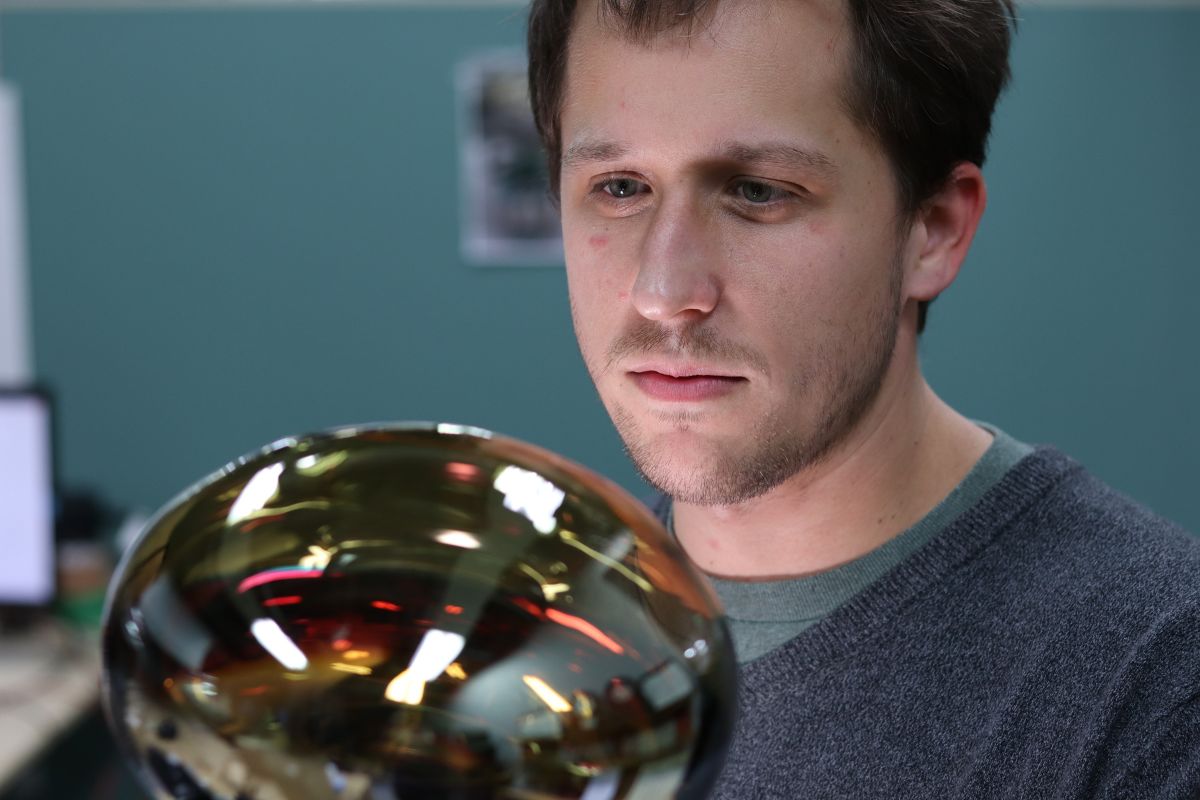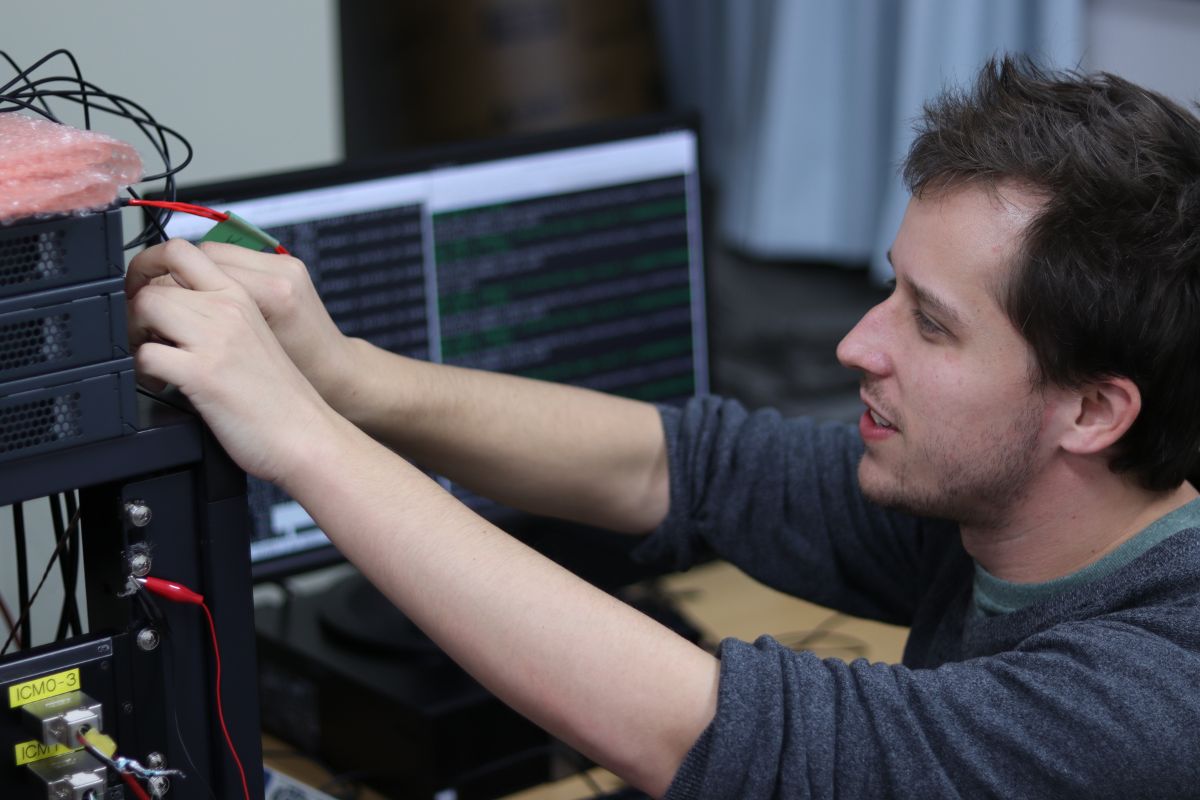Life Sciences Building, Room 206
501 S. Nedderman Drive
Box 19047
Arlington, TX 76019
Physics doctoral student prepares equipment for South Pole experiment

At the southernmost point of Antarctica, beneath a mile and a half of ice, a global team of researchers has buried special cameras to capture one of the universe’s rarest phenomena. Subatomic particles called neutrinos, originating in black holes and supernovas millions of lightyears away, crash into atoms within the transparent ice, resulting in charged particles that emit a blue light.
Scientists like Benjamin Smithers, physics doctoral candidate at The University of Texas at Arlington, believe the nuclear reactions monitored by the IceCube Neutrino Observatory will lead humanity to a broader understanding of the universe.

“There are some pretty deep questions at IceCube, and the neutrino is at the center of them all,” Smithers said. “These invisible, nearly massless particles hold an abundance of information about how matter evolved, creating everything around us.”
Throughout his time at UTA, Smithers has contributed his talents to the IceCube collaboration, but always from afar. This year, his research took him more than 6,000 miles from home to Chiba, Japan.
The next generation
After more than a decade and hundreds of thousands of observations, the IceCube observatory is preparing for a major upgrade. Within a few years, approximately 700 new types of photodetectors are scheduled to be deployed at the South Pole research site.
Smithers, who has nearly a decade of experience developing software and data analysis scripts, was selected to join the scientists at Chiba University who are responsible for building and testing one of the new detector types known as D-Eggs.
For weeks, he and collaborators calibrated and tested the egg-shaped pressure vessels, checking for any susceptibilities their hardware or software may have to the harsh conditions of the Antarctic ice shelf.

“We put them in a freezer and made sure all of the electronics still work, which is very challenging,” Smithers said. “Phones, computers, batteries-—none of our electronics are designed to operate at subzero temperatures. These detectors have to withstand extraordinary circumstances.”
Describing it as an “all-hands-on-deck situation,” Smithers acknowledged that it will be a long time before the new detectors are ready to make the arduous journey to the South Pole. Although it will take years to see his work come to fruition, he is happy to keep contributing to IceCube’s progress from a distance.
“Around the world, hundreds of scientists are working every day to improve our fundamental understanding of life as we know it,” Smithers said. “It’s incredible to participate in this growing global collaboration.”
--
The UTA College of Science, a Texas Tier One and Carnegie R1 research institution, is preparing the next generation of leaders in science through innovative education and hands-on research and offers programs in Biology, Chemistry & Biochemistry, Data Science, Earth & Environmental Sciences, Health Professions, Mathematics, Physics and Psychology. To support educational and research efforts visit the giving page, or if you're a prospective student interested in beginning your #MaverickScience journey visit our future students page.